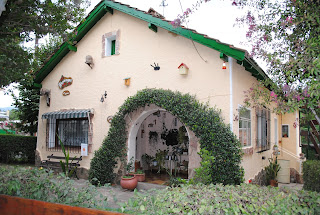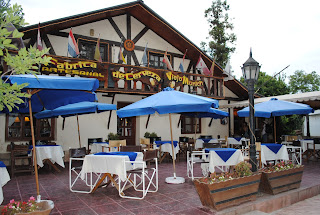Gaucho Traditions Preserved in San Antonio de Areco
Buenos Aires Province, Argentina
 |
| Historic Buildings |
By Roy Heale
Quite
often visitors to Buenos Aires are looking for interesting escapes
into the local countryside yet close to the city. Those seeking a
real gaucho experience and a sample of local history often choose the
quaint town of San Antonio de Areco founded in 1730 on the banks of
the Areco River. Located about 110 km northwest of the city, the town
dates back to the early 18th
century and many of the original buildings are well preserved and
function today as cafes, restaurants, and boutiques.
 |
| Unique Cafes |
 |
| Puenta Viejo---Old Bridge |
The city is the home of the Museo Gauchesco Ricardo
Güiraldes and has been declared a city of historic national
interest by the Argentine Government.
San Antonio de Areco’s compact town center and quiet streets are
very pedestrian friendly. Around the Plaza Ruiz de Arellano, named in
honor of the town’s founding estanciero (ranch owner), are several
historic buildings, including the Iglesia Parroquial (parish church)
opened in 1780. |
| Iglesia Parroquial |
There is an abundance of great dining options with prices much more reasonable than those in the City of Buenos Aires. The local specialty is, of course, meats cooked on the parilla with fresh vegetables and salads.
 |
| Parilla Delights |
If you prefer a longer visit than a one day excursion, there are a few small hotels around the town offering Bed&Breakfast plus the Hotel & Spa San Carlos on the riverbank park.
 |
| Hotel & Spa San Carlos |
Like many other small towns in this part of Argentina, Areco shuts down during the afternoon siesta.
 |
| Local Produce |
Regular bus service runs fro Retiro Omnibus Terminal and the journey is just under two hours depending on traffic.
Take a step back in time, relax and enjoy some Gaucho history in the pampas of Buenos Aires province.





















.jpg)
.jpg)
.jpg)
.jpg)
.jpg)


















